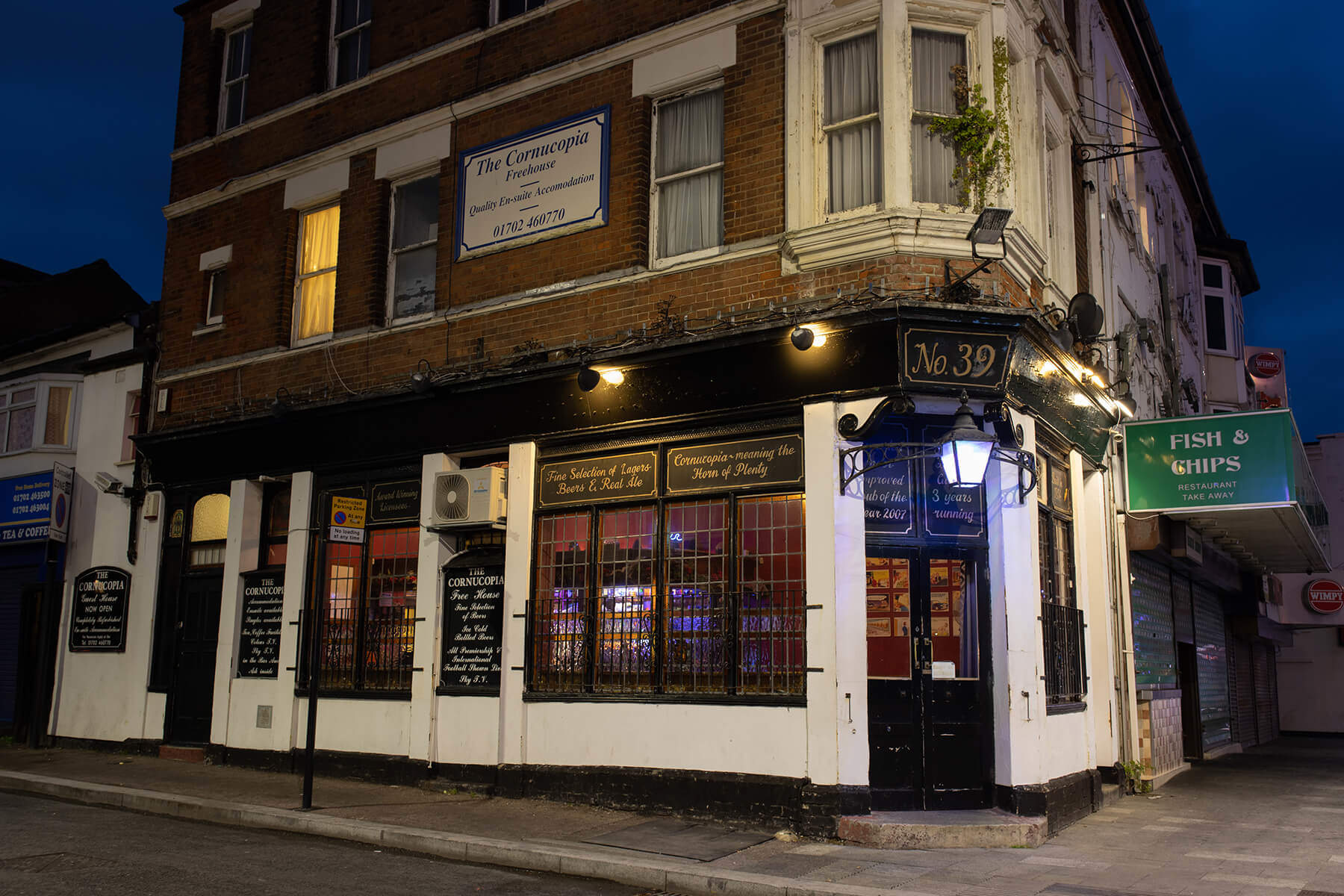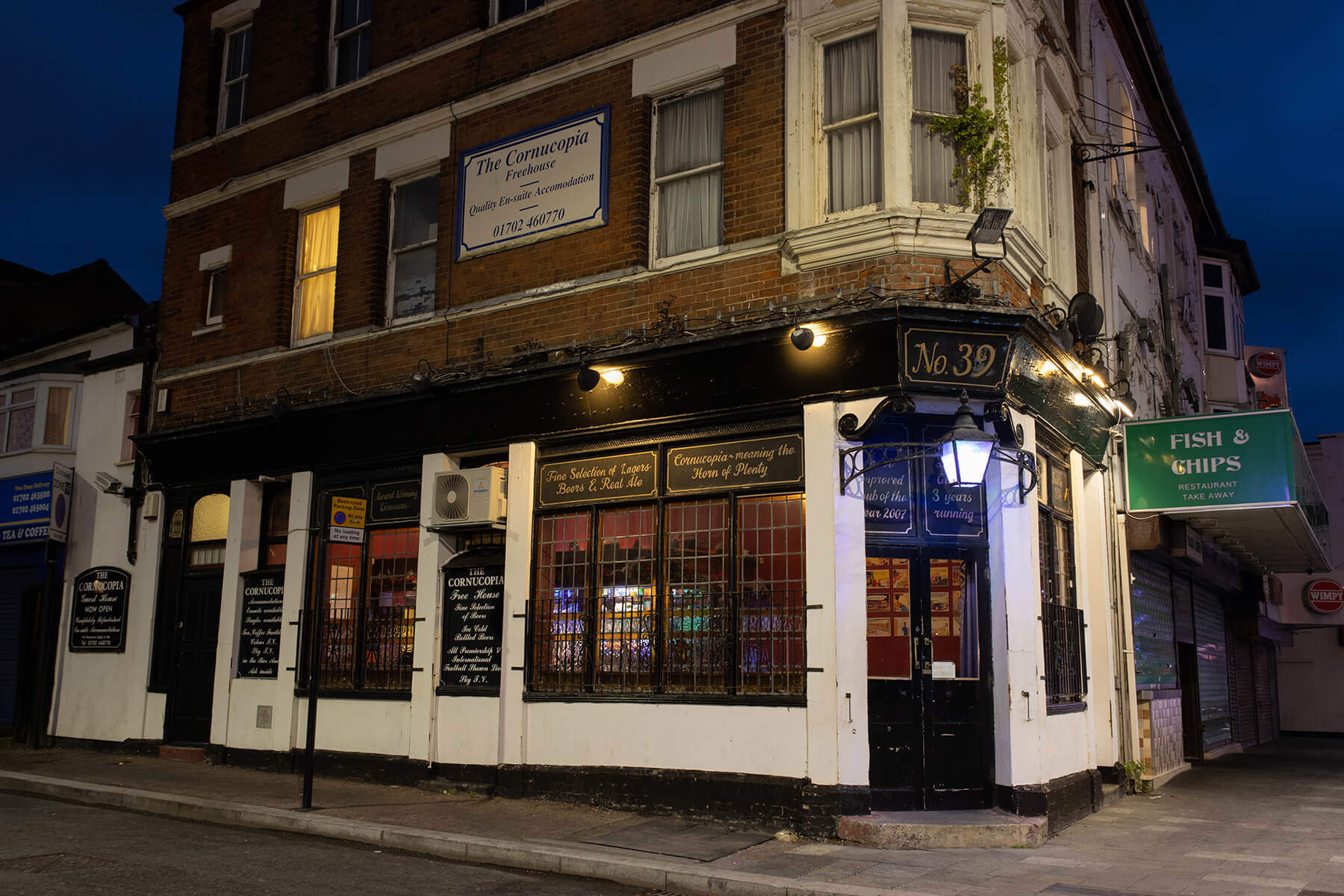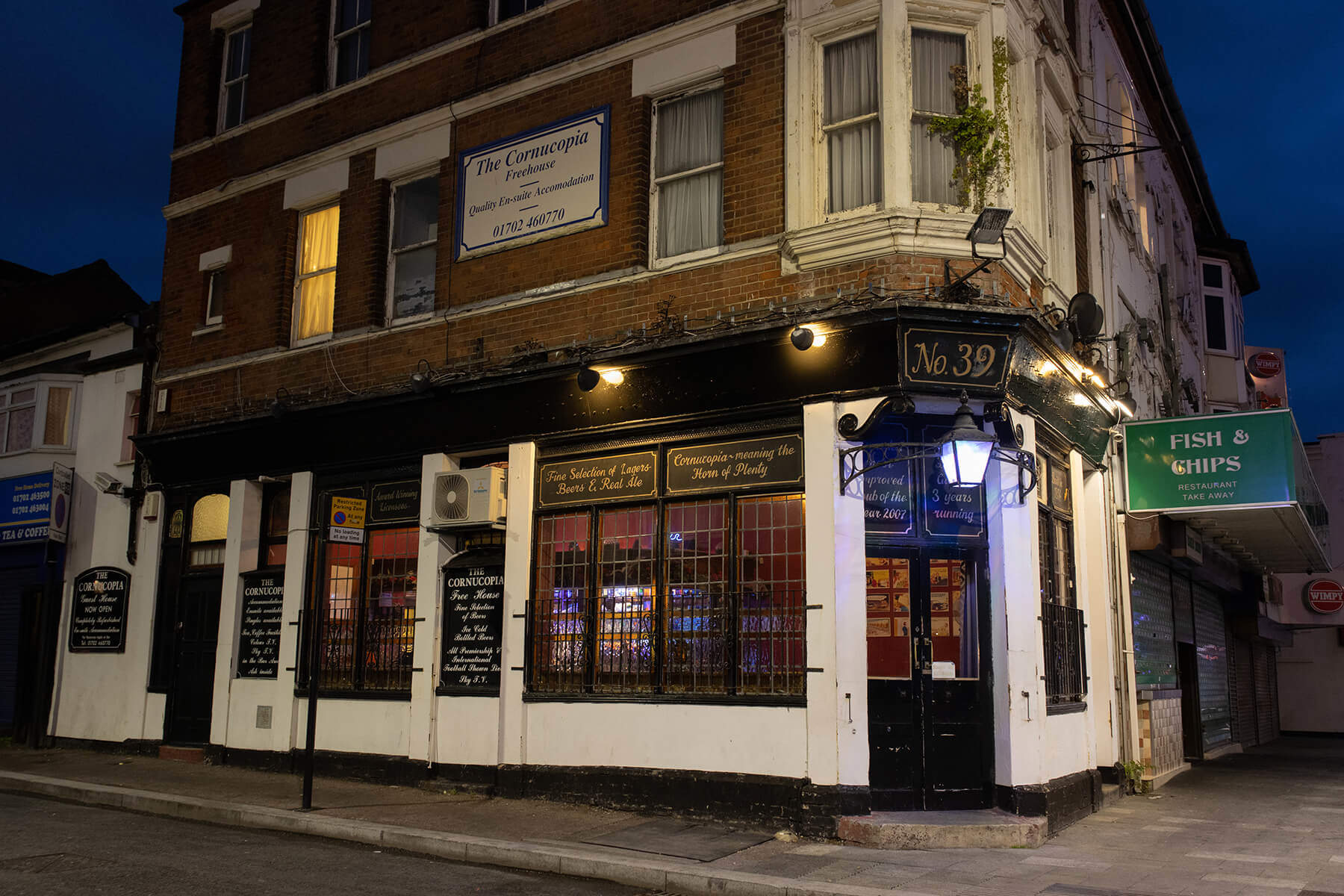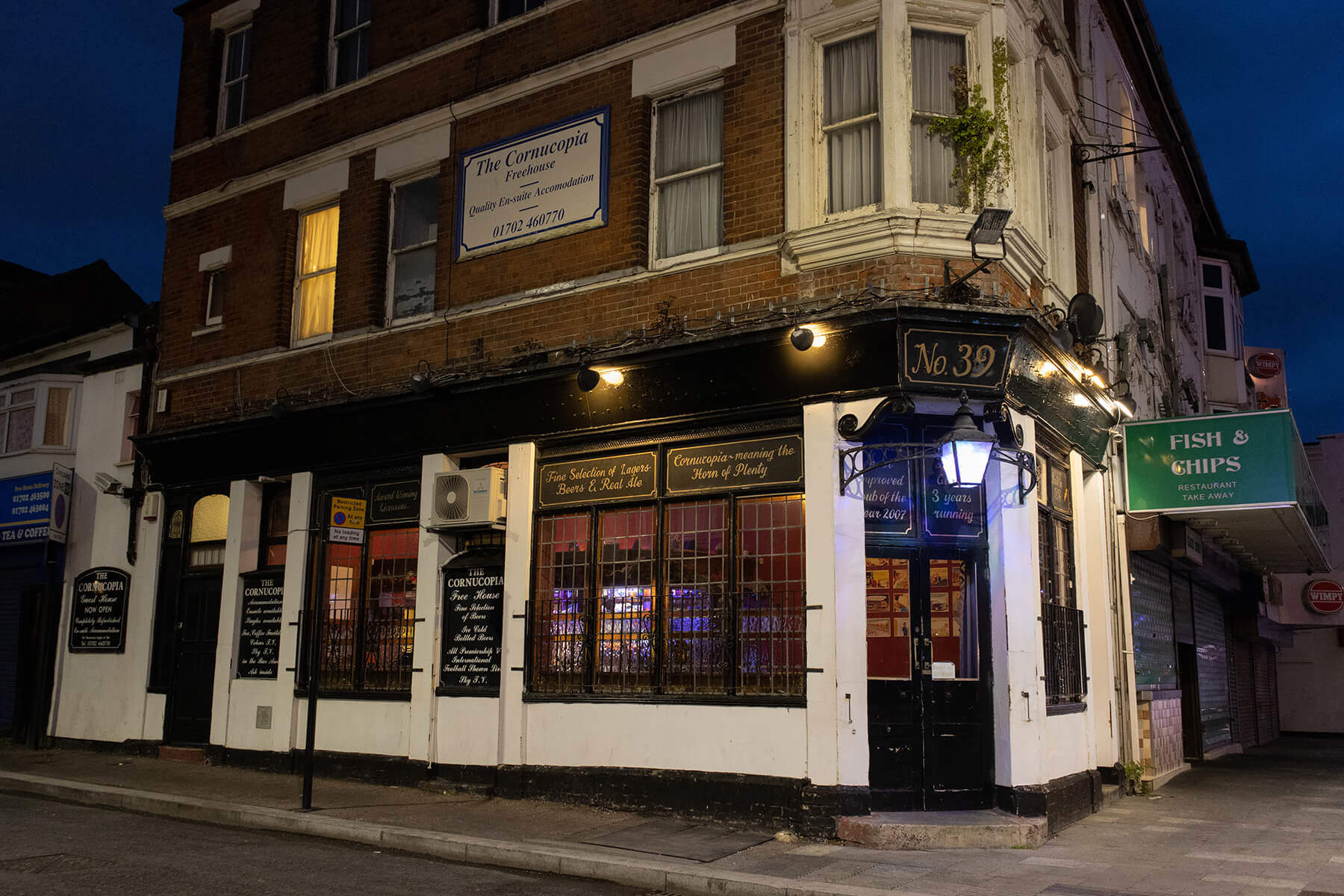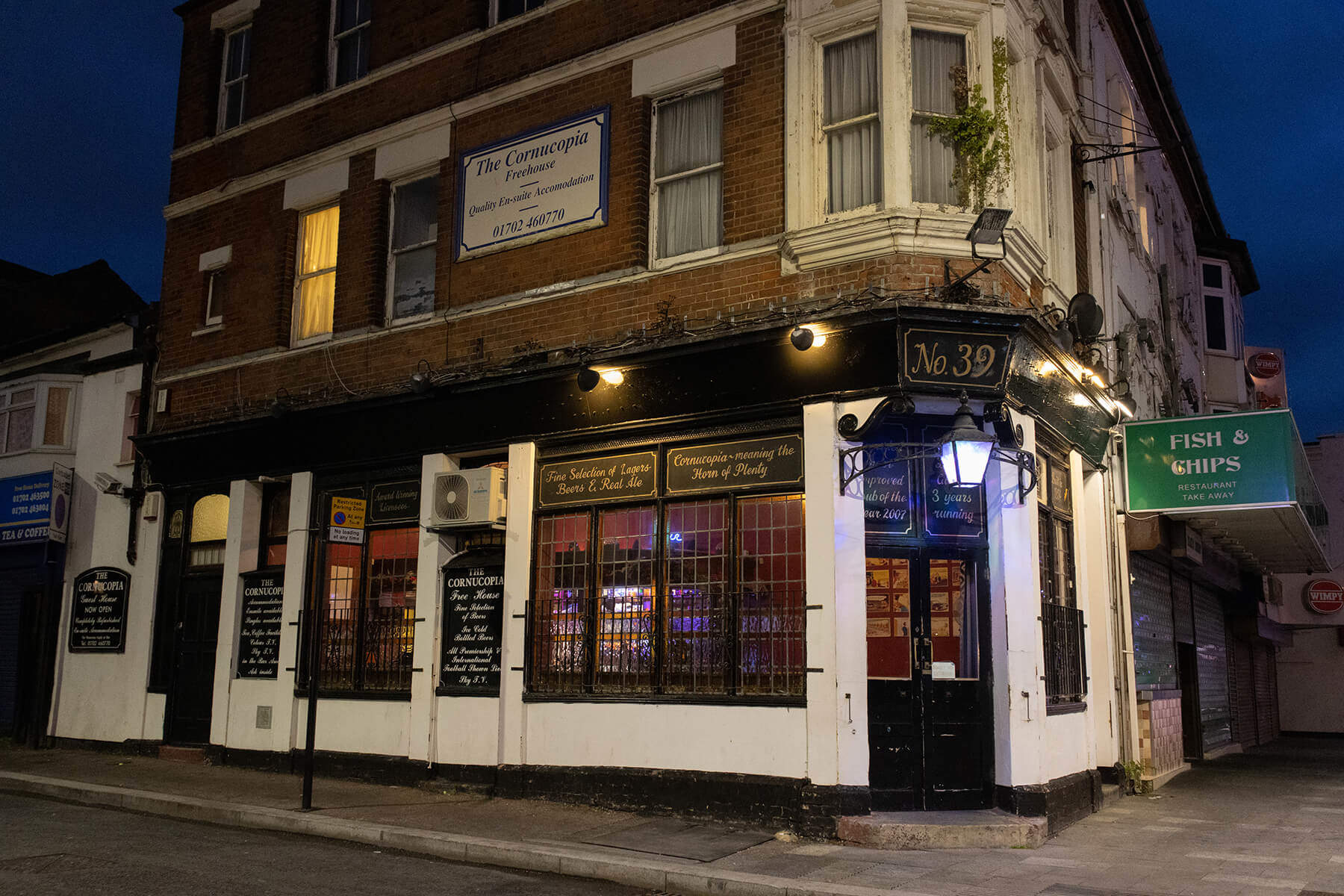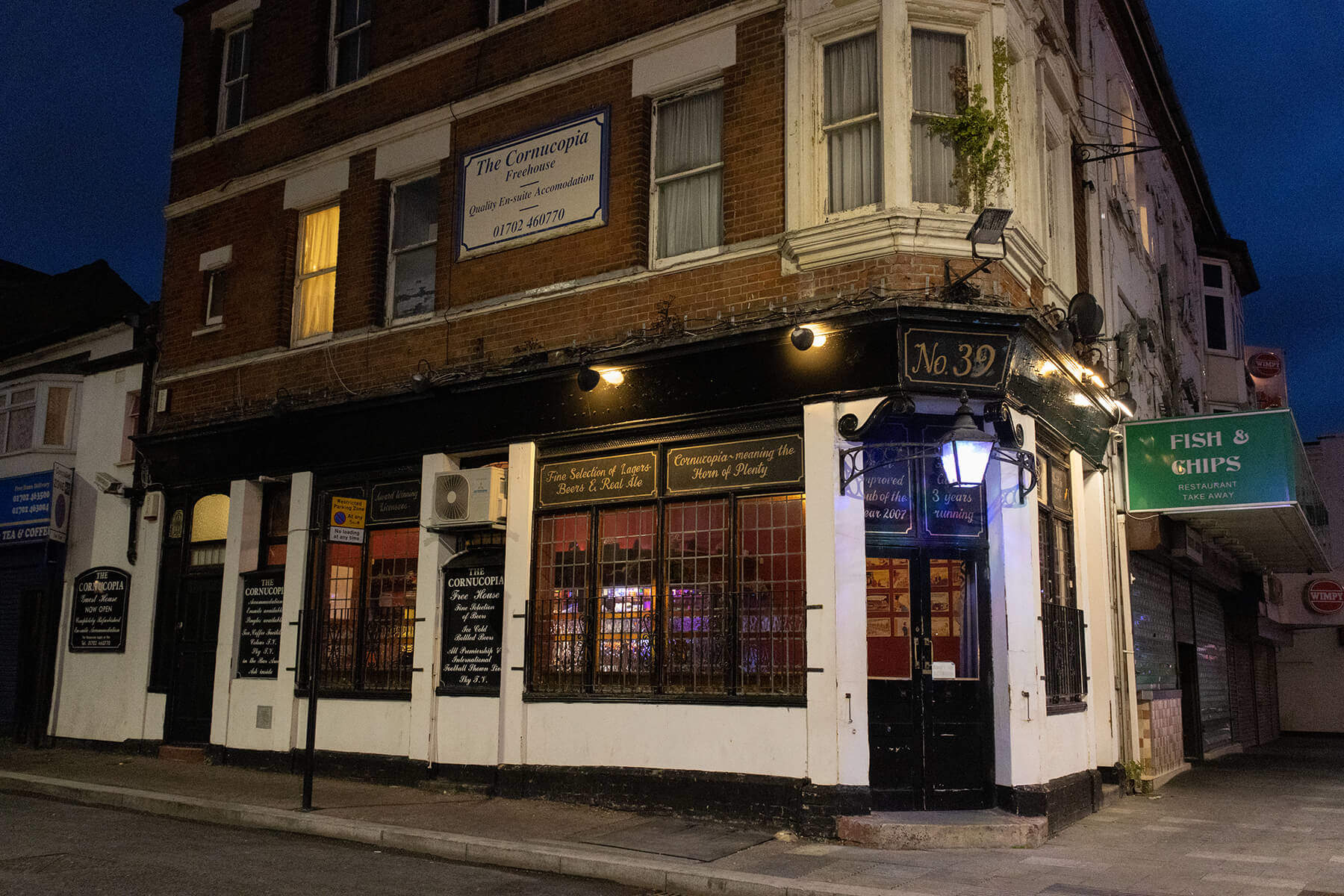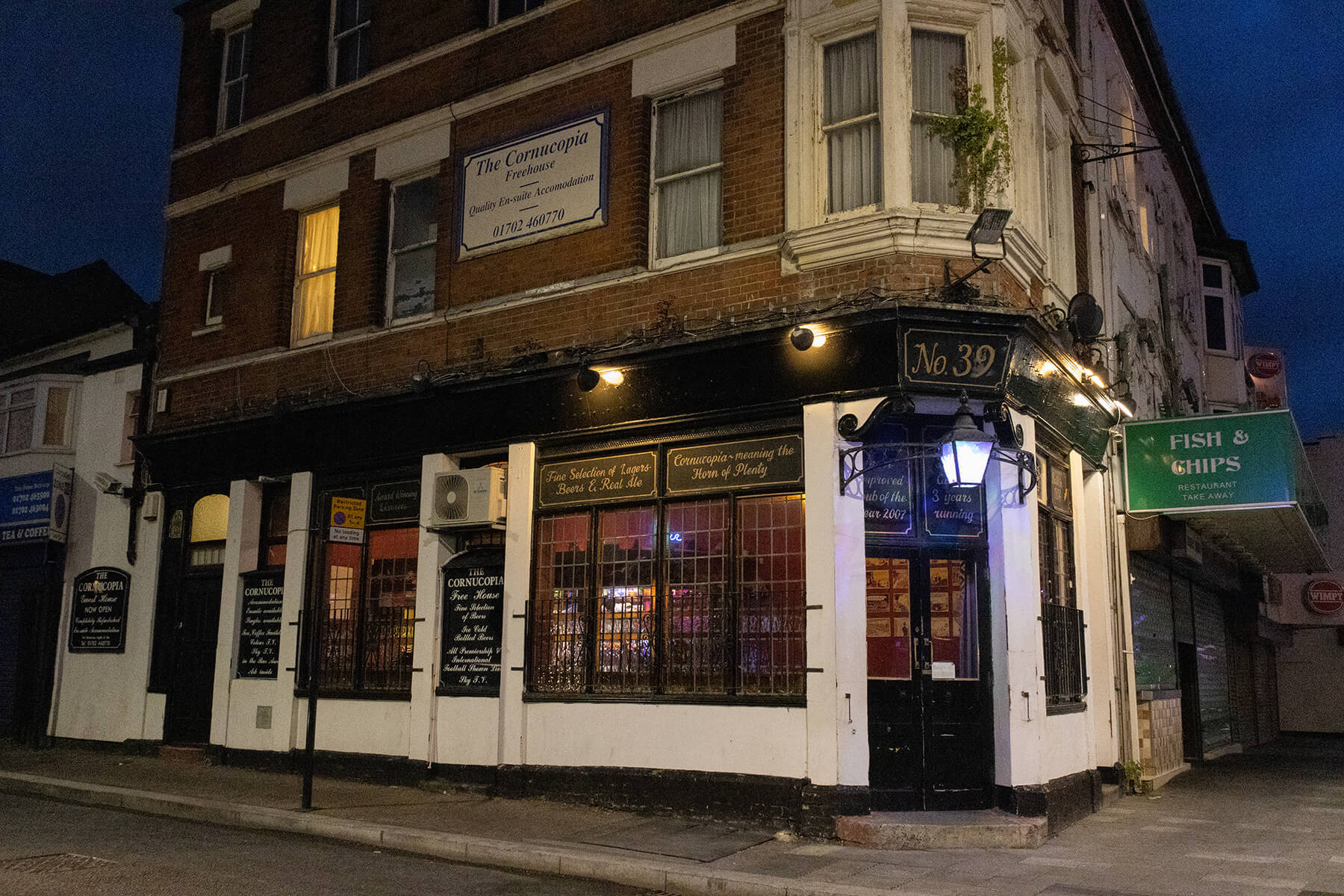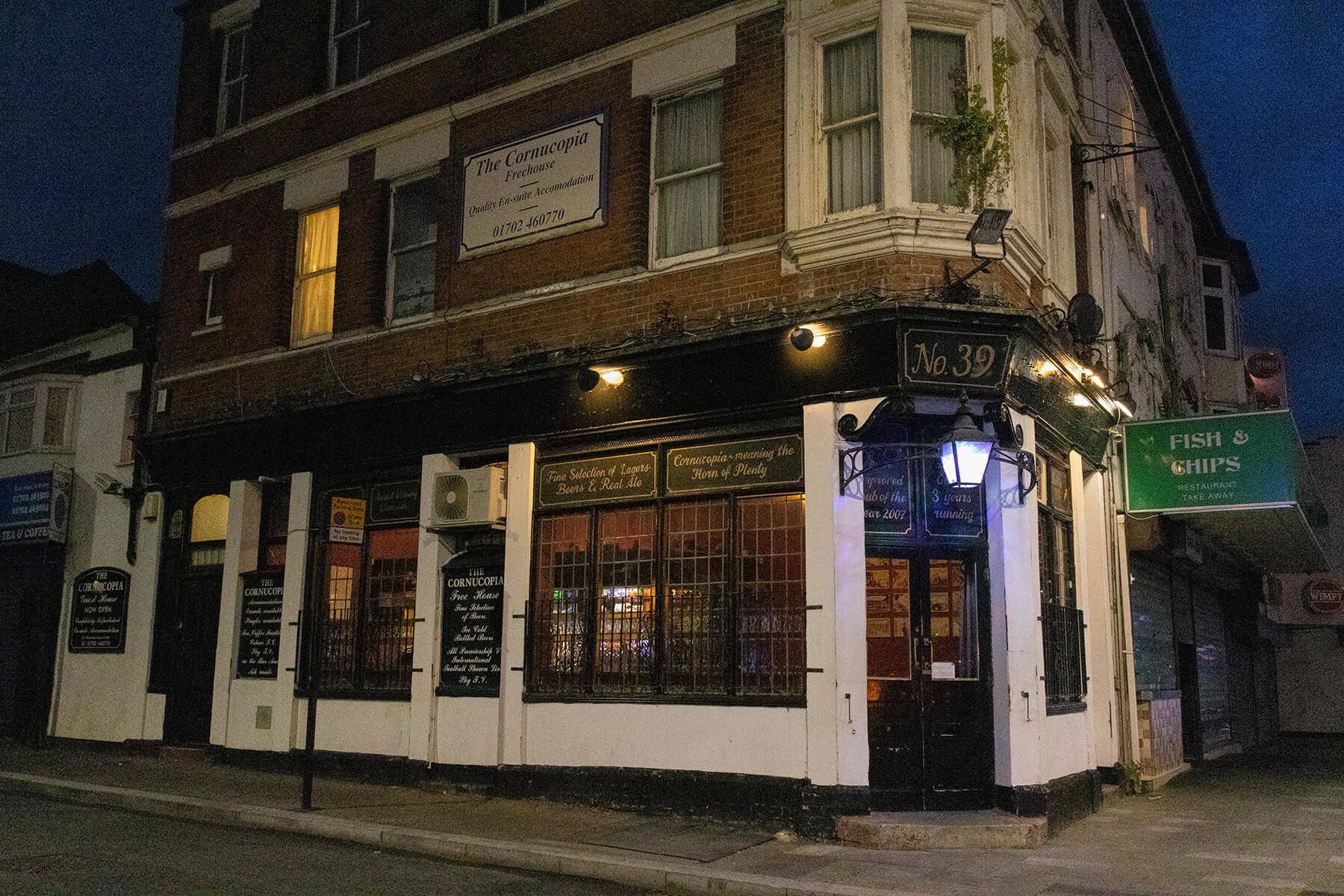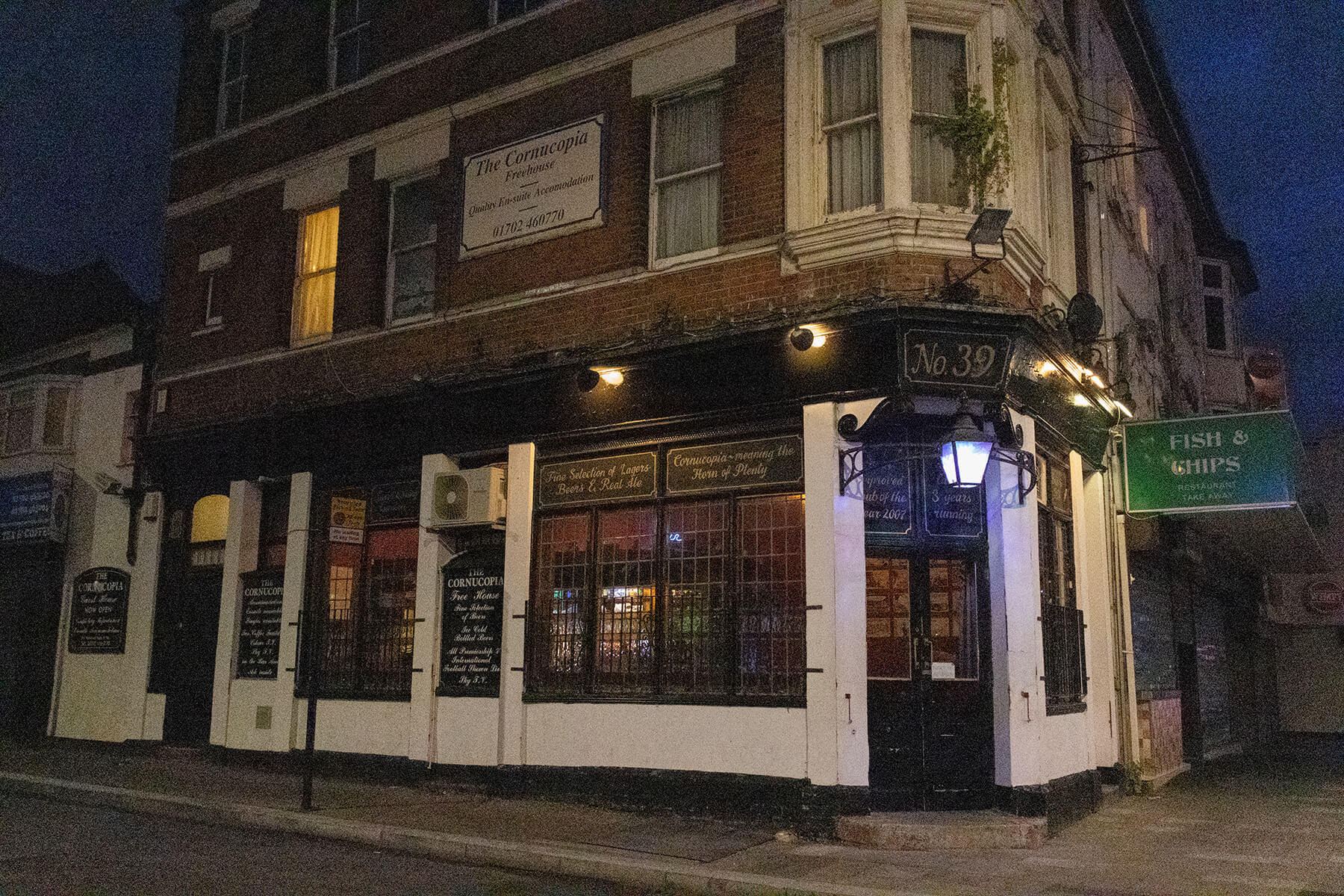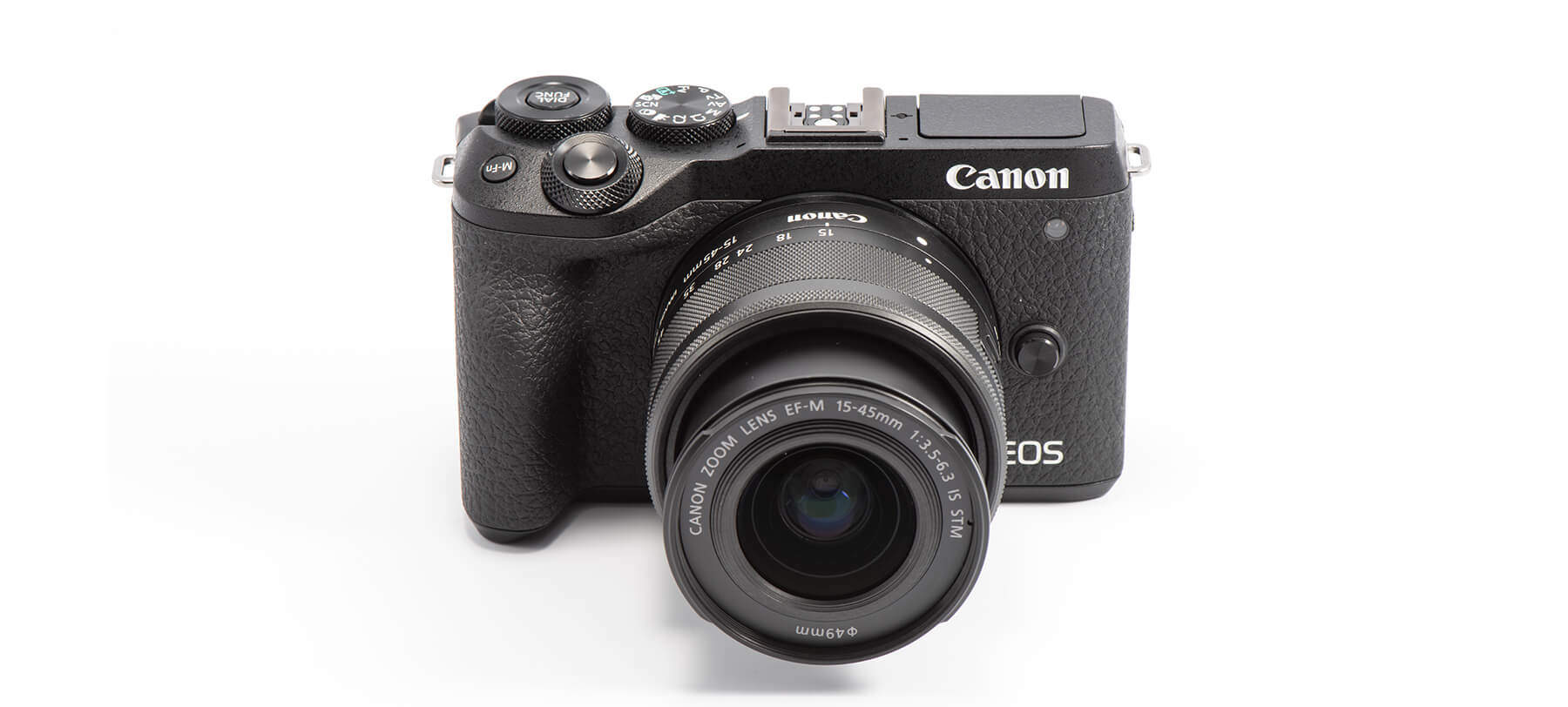
Canon EOS M6 Mark II test: Canon’s mirrorless flagship
Posted on Feb 18, 2020
Canon has a strong hand in every sector of the camera market and the EOS M6 Mark II has been introduced to sit at the top of its APS-C format mirrorless collection. A very impressive camera it is, too.
History tells us that Canon was slow on the uptake when it came to mirrorless cameras, but it is making up for lost time now, offering not one but two mirrorless systems. The EOS R range is 35mm full-frame and it’s where Canon is flexing its optical design muscle, coming up with several cutting-edge lenses, while the EOS M system is based on the APS-C format, where portability and usability have been – it seems – prioritised over great glass.
The Canon EOS M6 Mark II is the new EOS M flagship, with the body selling at £870 (or at £1120 with the EF-M 15-45mm f/3.5-6.3 IS STM lens and EVF-DC2 electronic viewfinder).
Compactness is one of the EOS M6 Mark II’s selling features, which has been achieved at the expense of an integral EVF. You need to spend £230 for the EVF-DC2, although there are bundles where it is included, usually with a cost saving. The finder just slips onto the hotshoe and, while it’s a decent viewfinder, the image is relatively small and not up to the standard you see in the latest integral EVFs. It took me a little time to get used to composing with a monitor only, and I did lift it up to my eye on several occasions, so that encouraged me to use the optional EVF even though it spoils the camera’s profile.
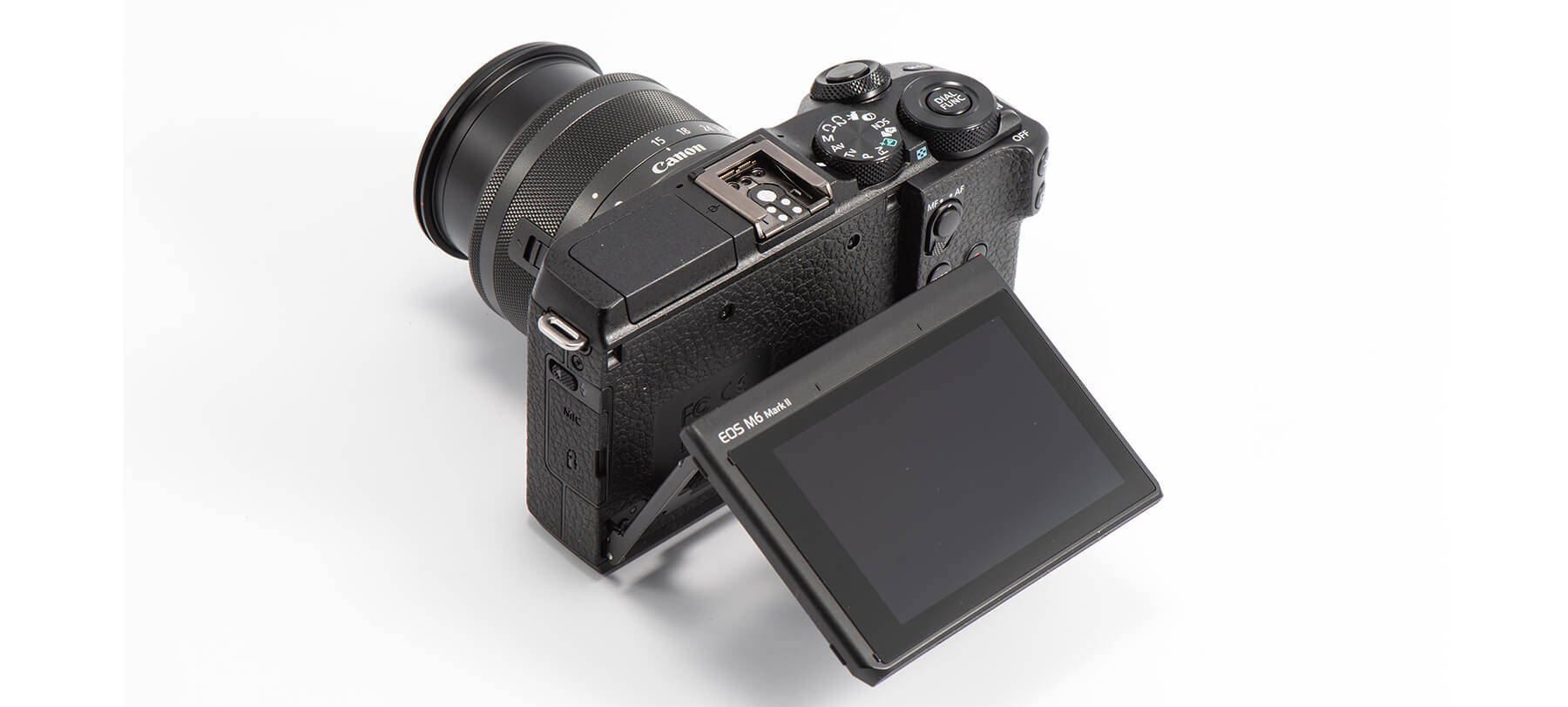
What you do get in the camera’s neat little body is a 32.5-megapixel sensor, making the EOS M6 Mark II the highest-resolution APS-C mirrorless camera currently available (the same sensor is found in the EOS 90D DSLR). The sensor has an optical low-pass filter, which inevitably takes the edge off ultimate image quality, but working with the DIGIC 8 image processor you do get a native ISO range that tops out at 25,600, with the option of 51,200.
And speaking of speed, the Canon EOS M6 Mark II can shoot at 14fps with autofocus tracking, and its large buffer allows 23 full-sized Raws with UHS-II cards.
There’s also a 30fps Raw burst mode, although with this setting the resolution drops to 18 megapixels. Partly depress the shutter release in this mode and the camera starts to capture images. If you fully depress the shutter release, you get images from the previous 0.5 seconds recorded to card. Yes, there’s no doubt that the EOS M6 Mark II packs a serious punch – and it’s richly featured for stills and video shooting.
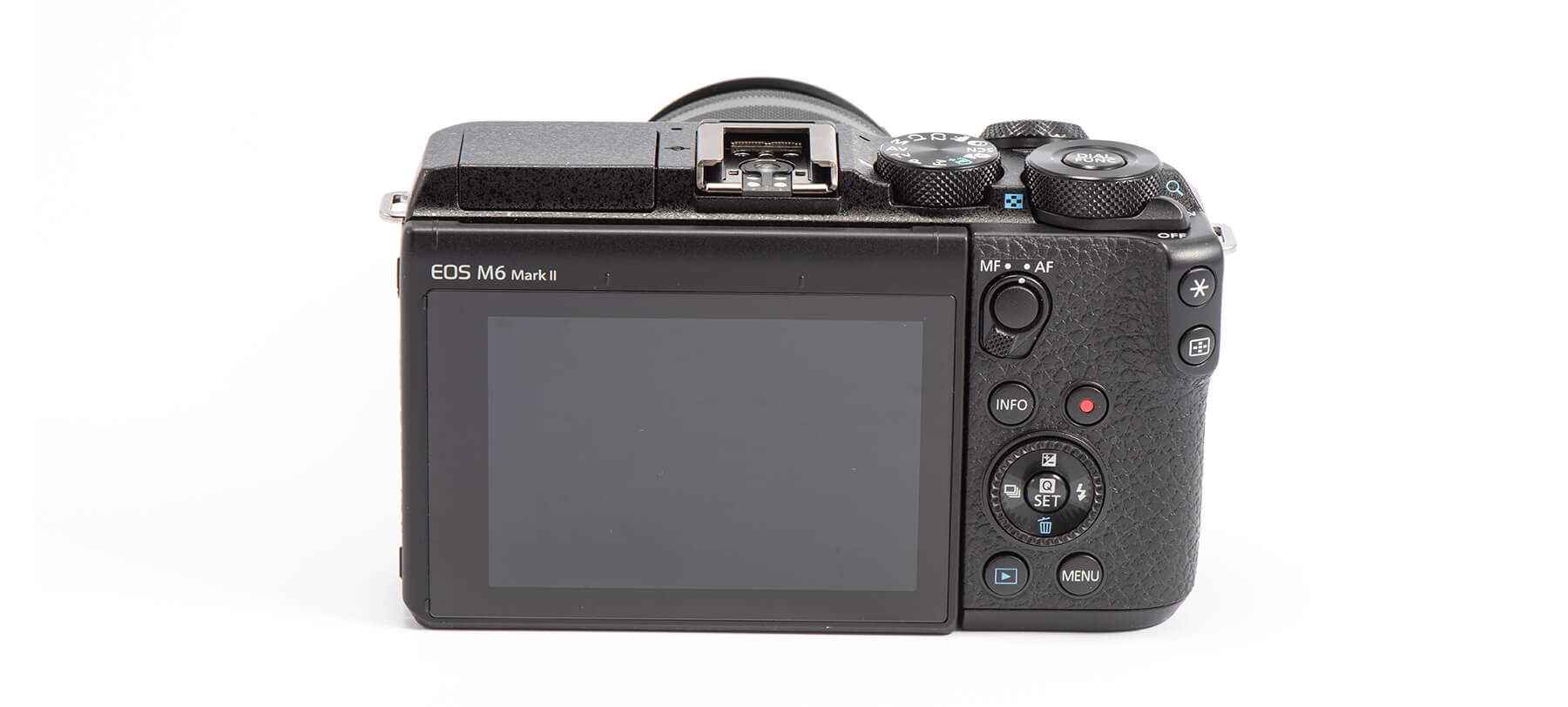
Performance: exposure latitude
I bracketed sets of full-size Raws in a variety of lighting conditions, from dull days to direct into-the-sun shots. The Raws were exposure corrected in Lightroom and Canon DPP.
The -3EV shots corrected well, although noise was obvious in midtones and shadow areas, but matters improved in the -2EV shot. By the time we got to the -1EV image, the corrected shot looked almost identical to the correctly exposed frame.
With overexposure, the +1EV and +2EV frames recovered impressively to look like the correctly exposed frame. However, the same could not be said of frames exposed at +3EV: they looked poor, especially the highlight areas.
Overall, the Canon EOS M6 Mark II’s Raws had decent rather than exceptional exposure latitude, but it was still a good showing.

With no built-in EVF, the monitor is central to the camera’s operation, so you need a good one. The EOS M6 Mark II’s is very good, so no worries in this respect. You get a three-inch touchscreen that folds up to 180° for convenient selfies and any angle in between for waist-level or low-angle shooting. The folding mechanism also tilts back, which means you get a 45° downwards facing position for above-the-head shooting.
The right-sided on/off switch pivots around a large input dial, at the centre of which is a push button marked Dual Func. This button can be assigned to 41 functions, the default being dual function, where up to five individual functions from eight options – which include ISO, drive and AF – can be assigned. Once selected for the dual function menu, pushing the Dual Func button allows you alter your selected five settings using the front or rear input dual. It’s neat, quick to use and very effective.
As I’m on custom functions right now, it is worth saying that the EOS M6 Mark II has a very decent set of options for still and movie shooting. For stills, 12 different controls can be personalised and ten in movie. What’s on offer for each button varies, but there’s plenty of choice. So, for example, the M-Fn, Dual Func, AF-On and movie record button all have 41 options, including ‘off ‘, while the AF area and drive buttons still have a very healthy 34 options.
Pushing the info button scrolls the monitor through five view options, from a plain screen to a fully informed, very busy view – you’ve got three options when the EVF is in use.
With the touch setting active, any feature in an outline box can be touch activated and adjusted. This includes the virtual Q button, which brings up many more virtual buttons to control and adjust the camera’s key functions. Even more controllability is provided by the rear multicontroller and the various buttons around it.
Performance: CR3 or CRaw?
The Canon EOS M6 Mark II offers the option of saving Raw images as full-size Raw format or CRaw, giving file sizes of around 39-42MB or 21-25MB respectively. The CRaw algorithm gives smaller, memory-saving files – a serious benefit both in shooting and storage, provided that any quality loss is acceptable. As a guide, on a 16GB card you get around 366 full-size Raws compared with roughly 624 CRaws.
I shot images in both formats in dull and bright light, at high and medium ISO settings and with different exposures. Files were processed in Lightroom and Canon DPP and checked on screen at 100%, to see if there were any differences.
To be honest, viewed at 100% on screen or in print, for the majority of my test shots, Raw and CRaw gave indistinguishable results, so I think I would use the space-saving CRaw option as my default. If confronted by an awesome view in contrasty light that I wanted to print up to A2 – and assuming I remembered – I would switch to Raw, but then I wouldn’t fret if I didn’t, because CRaw is capable.
All this flexibility and information can be a trifle overwhelming to start with, but once you spend some time with the set-up, followed by a period of familiarisation, the EOS M6 Mark II is a fine camera to use and intuitive, too. The dual function feature, I think, deserves a special mention, because I loved it.
The EOS M6 Mark II uses Canon’s highly acclaimed Dual Pixel CMOS autofocusing. Its phase detection pixels means the autofocus zeroes on the subject accurately and without any hesitancy. That’s not to say the system got it right every time, because it didn’t. Shooting in busy streets, the face detect tracking mode did not always pick up on the right subject. Using touch AF in zone or single point AF was effective, however, and with the monitor out at 90° for waist-level viewing, this proved a good way of working.
My sample also struggled and even missed the point of sharpness in very low light, despite the claimed -5EV low-light working range.
Click the images to see a larger view
Manual focusing is aided by focus peaking and the option of two degrees of magnification, 5x and 10x; focus peaking is not available in magnified view. The high-resolution monitor certainly helps in checking you have accurate focus, as does the focus peaking, which is very sensitive. Focus peaking is available when using the EVF, but the magnifier needs to be selected first by touching the monitor’s virtual magnifier icon before raising the EOS M6 Mk II up to the eye.
The mechanical shutter fires with a low-pitch sound that is not obvious amid general street noise, but for total discretion use the electronic shutter, which is silent but (handily) a white outline shows around the edge of the monitor image to indicate you have made an exposure.
The electronic shutter also comes into play when Raw burst/pre-shooting mode is selected. Raw burst shooting gives 30fps with AF tracking, but there is an image crop and 75% of the sensor is used to give an 18-megapixel image. In terms of pixel dimensions, the camera’s usual 6960×4640 pixels drops to 5220×3480 pixels in this mode.
If Raw burst mode appeals, you need to bear in mind that the CR3 Raw files have the CSI prefix, and you either have to extract a Raw or JPEG in camera or, because there’s no third-party support (at the time of writing), you have to use Canon’s free Digital Photo Professional software. DPP has its fans, although I’m not one of them, and extracting usable files from the CSI file is slow.
Performance: ISO
With the EOS M6 Mark II and its 15-45mm zoom fixed to a Benro carbon-fibre tripod, I took a set of full-size Raws at every ISO setting from ISO 100 to its expansion setting of ISO 51,200. The exposure for the low-light scene at ISO 100 was 0.6sec at f/11.
All in-camera noise reduction was turned off. The resulting Raws were processed in Canon Digital Photo Professional v4.11.1.0, with no noise reduction applied.
Checked at 100% on screen, images at ISO 100 and 200 were very clean, although you can see low levels of noise in the shadows at the latter speed. This becomes more evident at ISO 400 and ISO 800, although picture quality is still very high. Indeed, image quality is very decent at ISO 1600, with fine detail recorded nicely, but grain is visible in the midtones as well as shadows. For me, ISO 2500 is the highest speed for critical images and beyond this point noise levels are high, and there’s a significant impact on detail and colour saturation.
Overall, noise performance was good for the Canon EOS M6 Mark II, but not as good as the leading cameras in this market segment. Performance was still very decent, however, considering the sensor’s high resolution.
Click the images to see a larger view
Moving away from the Raw burst mode, the EOS M6 Mark II can shoot up to 14fps at High Speed Continuous. In my test, using a Lexar 2000X 300MB/s SD card, I got 24 frames at 13fps before slowing down, and the buffer took just over five seconds to clear. In High Speed Continuous, I got 27 frames at 7fps, while in Low Speed Continuous, I got 4fps and the camera continued shooting without any buffering
Use the EOS M6 Mark II in Raw, and there are two save options, full-size Raw and CRaw or compressed Raw. Both Raw save options give CR3 files and these do have third-party support – most of my processing for this test was done in Lightroom. See the panel on the previous page for more on these Raw settings
I enjoyed testing the Canon EOS M6 Mark II once I got used to a monitor-only camera. I did have the EVF in the bag, too, so it was available, but its small viewing image and extra size didn’t appeal. The camera’s exposure system proved very good, the AF more than capable and I liked the articulating monitor, too.
The 15-45mm lens supplied for test used at mid apertures gave a decent performance, but I think if I bought this camera, I’d look at the prime options that would make more of the sensor.
Verdict
Canon’s APS-C mirrorless system was launched in 2012, but since then I sensed that Canon’s commitment to its EOS M system was not total. The EOS M cameras that came out weren’t especially innovative or even interesting and the lens system was nothing to get the pulse racing. However, with the EOS M6 Mark II and its 32.5-megapixel sensor, I sense a sea change and more enthusiasm from the camera giant. On the lens front, we’re getting more interesting optics like the a EF-M 32mm f/1.4 STM and independent makers are getting involved, too.
The Canon EOS M6 Mark II is a fine camera with a rich set of features. Its mirrorless flagship is an attractive, more than competent camera that sells at a competitive price.
Pros: High resolution, monitor, dual function feature
Cons: Optional EVF, cropped 4K video when image stabiliser used
| Features | 23/25 |
The 32.5-megapixel sensor and small size are big advantages. |
| Handling | 22/25 | Touchscreen is good to use and overall control layout is sensible. |
| Performance | 23/25 | Exposure system very good, AF could be hit and miss in low light. |
| Value for money | 24/25 | So many megapixels in a decent handling and high-performing camera at this price is tempting. |
| Overall | 92/100 | It’s the best EOS M camera we’ve seen to date. |
For more information, please visit the Canon website.
As featured in issue 74 of Photography News.














